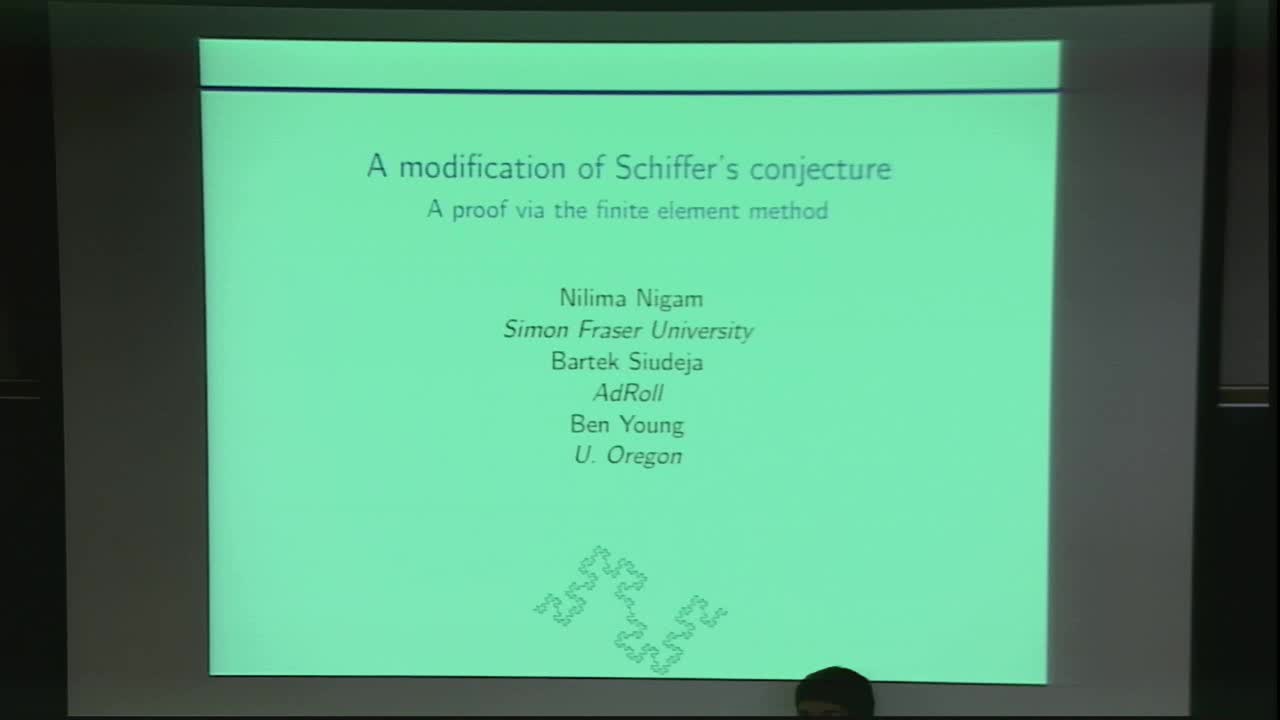A Modification of Schiffer's Conjecture and a Proof Via Finite Elements
Presenter
March 2, 2017
Abstract
Approximations via conforming and non-conforming finite elements can be used to construct validated and computable bounds on eigenvalues for the Dirichlet Laplacian in certain domains. If these are to be used as part of a proof, care must be taken to ensure each step of the computation is validated and verifiable. In this talk we present a long-standing conjecture in spectral geometry, and its resolution using validated finite element computations. Schiffer’s conjecture states that if a bounded domain Ω in R^n has any nontrivial Neumann eigenfunction which is a constant on the boundary, then Ω must be a ball. This conjecture is open.
A modification of Schiffer’s conjecture is: for regular polygons of at least 5 sides, we can demonstrate the existence of a Neumann eigenfunction which is does not change sign on the boundary. In this talk, we provide a recent proof using finite element calculations for the regular pentagon. The strategy involves iteratively bounding eigenvalues for a sequence of polygonal subdomains of the triangle with mixed Dirichlet and Neumann boundary conditions. We use a learning algorithm to find and optimize this sequence of subdomains, and use non- conforming linear FEM to compute validated lower bounds for the lowest eigenvalue in each of these domains. The linear algebra is performed within interval arithmetic.
This is joint work with Bartek Siudeja and Ben Green.
